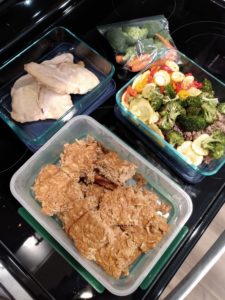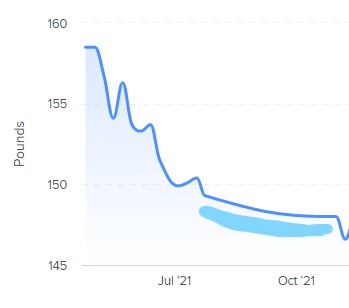No products in the cart.
Breaking Through Plateaus
Plateaus are a given during your weight-loss journey, but it is how we look at them that makes all the difference.
Let’s not think of a plateau as a point in your journey where your body is stuck, but a point in your journey where your body is actually able to maintain its new weight. Ultimately, when we reach our goal we want to be able to maintain it. A plateau is showing us that our body is capable of maintaining its new weight. It’s showing us that we are capable of maintaining our goal once we reach it. Yes!
However, what if we haven’t reached our goal yet? How should we break through the plateau?
Plateaus occur because there is no longer a deficit. Our energy “in” has equaled our energy “out”. Often people want to jump right to having their macro numbers lowered. But what if your numbers are already low? Do you really want to eat less food? (Eating even less food can make it hard to stick to the plan!)
Let’s think about a few other things to help break through your plateau before considering lowering your macro numbers –
*Are you tracking everything you put in your mouth? Little bites add up and can put you over your macros causing your progress to slow down. Also, undereating can tamper with your progress…are you tracking food that you are not actually eating?
*If you are feeling hungry, which is causing you to make questionable food choices, consider increasing foods that have less calories but you can eat more of – for example, spinach, broccoli, tomatoes, and many other veggies – to help you feel full.

*Increasing training sessions during the week – consider increasing the amount or duration of formal exercise during your week
*Consider the intensity of your training sessions – are you able to safely increase the intensity of your training sessions? Lift heavier weight? Increase reps? Pushing yourself a little bit harder?
*If your schedule does not allow you to add training sessions into your week or increase their duration, consider increasing your movement throughout the day. For example, parking farther from the store, standing more at work, taking 5-10 minute walks throughout the day, etc.
With a few adjustments, we can break through a plateau and be back on the road to reaching our goals!
-Leslie Benner, Health Coach



